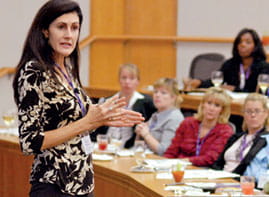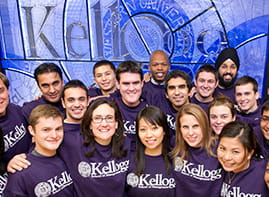Kellogg researchers explore how communication channels affect negotiation outcomes
7/7/2011 - Should you negotiate face-to-face? This question bedevils even the most seasoned negotiators. Partly it’s a practical question: Is it worth the time and expense to travel around the world? But it also raises a critical theoretical issue: How do communication channels affect negotiation outcomes?
According to a new study, a negotiator’s ability to see and hear a partner (for example, face-to-face or via a Skype video conference) might improve his or her chances to seal the deal, but it could kill a deal, too. Researchers at the Kellogg School and INSEAD find that the
relationship between negotiators is the critical factor in determining a negotiation’s success or failure, rather than the communication channel in which the negotiation takes place.
“The success of the deal all depends on the negotiators’ attitudes and personal history,” said Adam Galinsky, co-author and the Kellogg School’s Morris and Alice Kaplan Professor of Ethics and Decision in Management.
Although psychologists and communications scholars have widely studied the use and effectiveness of communication channels, the literature is divided regarding their impact on negotiations and group decision-making.
“Within the broad range of research on communication channels, there are contradicting findings,” Galinsky said. “Some studies find that face-to-face contact is necessary to achieve mutually satisfactory outcomes, whereas others find no effect (in) being able to see and hear each other. Additionally, some studies even show that seeing and hearing the other negotiator can actually hinder agreements and prevent the creation of joint value.
“Our research resolves all these contradictory data and explains exactly how and why these contradictory effects occur, and can pinpoint exactly what needs to be done to achieve success at the bargain table.”
The paper is co-authored by Kellogg School professors
Victoria Medvec and
Daniel Diermeier, with Roderick Swaab of INSEAD.
To explain these inconsistencies, the researchers developed a “Communication Orientation Model” to explain the relationship between the communicator’s willingness to cooperate and the effectiveness of various communication channels. The researchers conducted a meta-analysis in which they performed a statistical analysis on every study that had been conducted on this topic and manipulated whether negotiators could see or hear each other or not (for example, some negotiated face-to-face or via video chat, whereas others only negotiated via phone or email). The study outlines three different outcomes:
- For communicators with a neutral stance or no past personal relationship, communication channels increase the likelihood of achieving high-quality outcomes. The researchers found that when unacquainted individuals enter into a negotiation, the use of richer communication media that allows negotiators to see and hear each other helps to establish rapport. Nonverbal cues, such as tone of voice, facial expression and gesture, allow these communicators to learn more about the other side and to develop enough trust to share and integrate information.
- When partners have a history of cooperation or are willing to cooperate, communication channels do not affect the likelihood of high-quality outcomes. In this instance, negotiating partners assume the best of their partners because of a shared history or identity. Partners interpret communication between one another with the best of intentions since there is an inherent level of trust. The researchers found no change in the quality of negotiation outcomes if the negotiators could see or hear each other.
- However, communication channels decrease the likelihood of high-quality outcomes when negotiators have a history of vitriol and rancor or when they are seeking personal gain. Aggressive behavior during negotiations can lead people to use competitive tactics to defend and protect their own interests. As a result, these channels hinder the exchange of ideas and ultimately prevent a successful resolution. Communication channels “not only transmit factual information but can also intensify feelings, and their presence has the potential to escalate (already existing) non-cooperative predispositions,” the authors wrote. When entering tense talks, the researchers suggest that resolutions are more likely to be achieved by restricting communication (face-to-face or electronically) and introducing a mediator.
“Our mission was to resolve these contradictions,” said Swaab, the lead author and an assistant professor of organizational behavior. “Also, we wanted to understand how parties could reach an outcome that is most beneficial to all — a high-quality outcome. The Communication Orientation Model provides a more stable context in which to examine decision-making among groups and explains why there is a range of existing findings.”
The study, “The Communication Orientation Model: Explaining the Diverse Effects of Sight, Sound, and Synchronicity on Negotiation and Group Decision-Making Outcomes,” will appear in a forthcoming issue of
Personality and Social Psychology Review.






